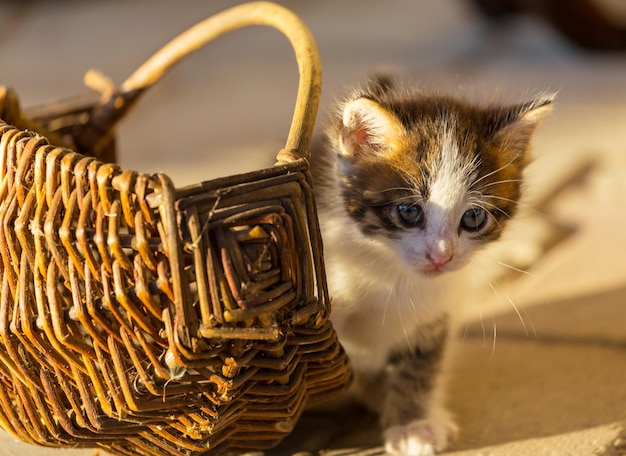Sand Cat Facts

Sand cats are small wild cats found in deserts across northern Africa and southwestern Asia.
These cats are adapted to the desert environment and are known for their amazing survival skills.
Sand cats have thick fur on their paws, which protects them from extreme temperatures and allows them to walk on hot sand.
Despite their small size, sand cats are excellent hunters, preying on rodents, birds, lizards, and insects.
Sand cats have a unique hunting technique – they can remain completely still for hours, waiting for their prey to come closer.
These cats have large, round ears that help them detect low-frequency sounds, allowing them to locate prey underground.
Sand cats have beautiful pale fur with distinct dark stripes on their limbs and tail.
Although they are solitary animals, sand cats sometimes come together for breeding purposes.
Female sand cats give birth to two to four kittens in a litter, which they raise in a den.
Sand cats are excellent climbers and are known to climb trees to eat fruit or even to escape from predators.
These cats have retractable claws, which they use for climbing and catching prey.
Sand cats are incredibly fast runners, reaching speeds of up to 25 miles per hour.
Sand cats have been known to go without water for long periods, getting most of their moisture from their prey.
These cats have thick fur on their undersides, which helps protect them from the hot desert sand.
Sand Cat Facts part 2
Sand cats have been successfully bred in captivity, contributing to conservation efforts.
These cats are listed as Near Threatened due to habitat loss and hunting.
Sand cats are most active during dawn and dusk, as the desert climate at these times is more tolerable.
Sand cats have adapted to the desert by having a lower metabolic rate, which allows them to conserve energy.
These cats mark their territory with urine and scratching on the ground.
Sand cats have a lifespan of around 10 to 13 years in the wild.
Despite their name, sand cats are not closely related to domestic cats.
These cats have a unique vocalization, creating a sound similar to a bird’s chirping.
Sand cats have a specialized kidney system that helps them efficiently conserve water.
These cats have large jaw muscles, which allow them to kill prey quickly.
Sand cats have a thick, bushy tail that they use for balance while hunting.
These cats have a keen sense of smell, which helps them track down hidden prey.
Sand cats are well-adapted to their desert environment and can survive temperatures ranging from -5°C to 52°C (23°F to 126°F).
These cats are known as sand dune cats due to their ability to blend perfectly with the desert sand.
Sand cats have tufts of long hair on their ears, providing extra protection from wind and sand.
These cats are highly elusive and are rarely spotted in the wild.
Sand cats are not considered a threat to humans and generally avoid human settlements.
These cats have a unique hunting strategy, where they use a combination of stealth and speed to catch their prey.
Sand cats communicate with each other through a range of vocalizations, including purring, hissing, and growling.
These cats have special adaptations in their eyes, which allow them to see clearly in low light conditions.
Sand cats have been known to cover their tracks after hunting, making it harder for predators to find them.
These cats can survive in extremely arid environments with very little vegetation.
Sand cats are agile climbers and can use bushes or trees as elevated vantage points.
These cats have been observed rolling in the sand, possibly to help remove parasites from their fur.
Sand cats have been considered sacred by some desert-dwelling tribes.
These cats have a thick layer of fat under their skin, which helps them store energy during lean times.
Sand cats are excellent swimmers and can cross small bodies of water if necessary.
These cats have been known to dig burrows in the sand for shelter from extreme weather conditions.
Sand cats have sharp, retractable claws that are used for catching prey and navigating the desert terrain.
These cats have keen eyesight, allowing them to spot potential prey from a distance.
Sand cats are fascinating creatures that have perfected the art of survival in one of the harshest environments on Earth.

